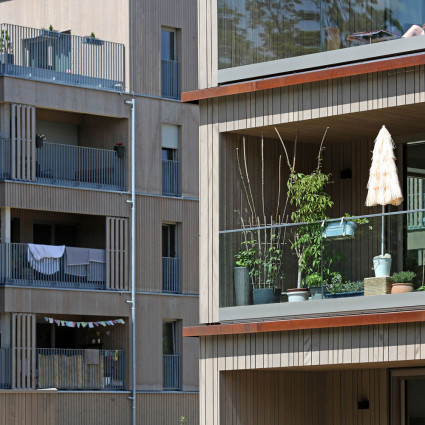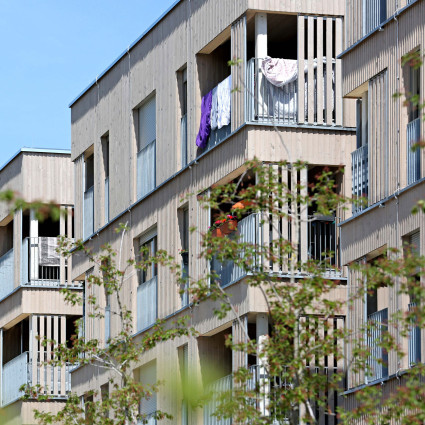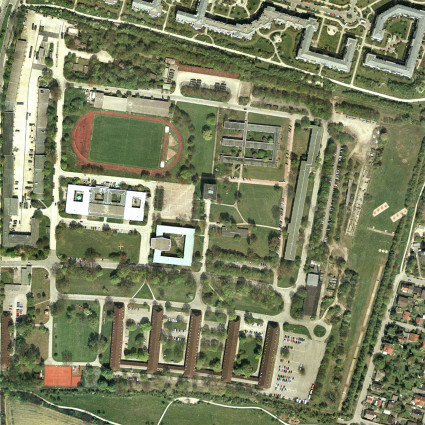



Prinz-Eugen-Park
With its ecological model settlement, its own neighbourhood cooperative and an innovative mobility scheme, the Prinz-Eugen-Park is a model district in every respect. A residential quarter with 1,800 apartments has been created on a former barracks site in Munich-Bogenhausen. There are diverse forms of housing and architectural styles to be found, from compact apartment buildings, terraced houses, and city villas to larger apartment blocks. The centre of the new residential area is a vital central square that serves the quarter with shops and restaurants. The quarter is set in parkland with highly valued older trees.
Living in Prinz-Eugen-Park is affordable for everyone thanks to the varied housing options and 50 percent subsidized housing. A wide range of mobility options, accessible to all households, make it unnecessary for residents to own a car. In another special feature of this development, a consortium was formed between the municipal housing association „Münchner Wohnen“ , cooperatives, building associations and property developers, with the aim of developing a dynamic new district. The Israeli community is represented with a retirement village. Future residents were consulted on the design of the neighbourhood from the beginning of the project.
History
The former Prinz-Eugen-Kaserne ( Prinz Eugen Barracks) on Cosimastrasse was built in the 1930s under the name of Lohengrinkaserne (Lohengrin Barracks). After the Second World War, US troops took over the buildings and also created accommodation for displaced persons. From 1956 to April 2009, the Bundeswehr used the barracks as a pioneer school. In 2005 the city of Munich bought the site. In 2008 an urban and landscape planning competition was announced. The central theme was the careful use of the environment and energy, and a settlement with strong ecological credentials.
Stations
- Cooperative living wagnisPARK
- NEST-Passivhaus
- Primary School on Ruth-Drexel-Strasse
- Maria-Nindl-Platz
- Ecological Model Settlement
- GEWOFAG Residential Area in the Ecological Model Settlement
- GWG Residential Area in the Ecological Model Settlement
- Team³ in the Ecological Model Settlement
- Munich GbR in the Ecological Model Settlement
- Gemeinsam Größer (Better Together) II in the Ecological Model Settlement
- Bürgerbauverein (Community Housing Association) in the Ecological Model Settlement
- The Kleine Prinz in the Ecological Model Settlement
- Urban forest
Continue tour
Photo credits
Michael Nagy/LHM, LHMDie Standorterkennung ist fehlgeschlagen.
Bitte prüfen Sie die Standortfreigaben Ihres Browsers und/oder die Systemeinstellungen Ihres Gerätes.
Mehr dazu auf unserer Hilfeseite.